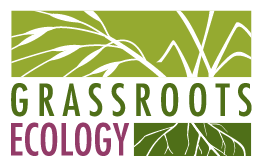Restoring our Wetlands for a Changing Climate
By Junko Bryant, Assistant Director
Have you ever walked barefoot through a tidal mudflat? I got the unexpected opportunity to do so last summer when the months-long pandemic closure of my regular swimming pool led to an invitation from a swim buddy to do a lap around the cove just west of Coyote Point.
It is squishy, but in order to get far out enough to actually swim, we have to wade through a good hundred yards of knee-deep water, so we carry on. In very low tides, this area is exposed and provides foraging habitat for shorebirds seeking a meal of invertebrates. They probably don’t sink into the muck as much as we humans do.
Most of the land east of Highway 101 on the San Francisco Bay Peninsula and South Bay used to be tidal salt marsh. Landforms that created the cove where we were swimming were constructed to make the land developable. (Coyote Point itself is a natural formation, but it was once surrounded by marsh.) This is the story of most of San Francisco Bay, where an estimated 85 percent of tidal salt marsh has been lost to fill or alteration.
We need those marshes now more than ever as we face a changing climate. Marshes provide a buffer between open water and the shore by dissipating wave energy, thus reducing flood risk. They sequester carbon, thus doing their part to reduce the greenhouse effect. And not least of all they provide shelter, forage, and nesting and breeding grounds for birds, mammals, fish and other aquatic life, including many rare and endangered species.
Grassroots Ecology’s 2019 College Interns visiting Don Edwards National Wildlife Refuge in San Jose
There is lots of good news in our region with major wetlands restoration projects taking place such as the 15,100 acre South Bay Salt Pond Restoration Project, and the passage of Measure AA by all nine Bay Area counties in 2016 to help fund these types of projects.
Grassroots Ecology is working to keep our wetlands healthy by restoring native plants to marsh-adjacent upland areas and transition zone habitat. These areas provide important cover for marsh-dwelling species such as the endangered salt marsh harvest mouse and Ridgway’s rail when high tides inundate the lower elevations, an occurrence that will become more frequent with rising sea levels.
At Cooley Landing in East Palo Alto, where much of the park is built on a former trash dump, thousands of volunteers have helped over the years to establish a diversity of native plants. We are also keeping a 600-foot bioswale planted with a variety of plants, including marsh gumplant, California phacelia, yarrow, California fuschia, and saltbush that help filter pollutants from the road before water flows into the adjacent Ravenswood Preserve.
High school interns adding mulch to the line of juncus at Cooley Landing, designed by Linda Gass to represent the historical shoreline
High school intern weeding the bioswale along Bay Road at Cooley Landing
In Alviso, we are starting to test out plants for restoring upland transition zone habitat near a tidal inlet on property that is being managed by the Santa Clara Valley Habitat Agency for the endangered burrowing owl. The plan is to increase habitat for burrowing owl prey by establishing stands of marsh gumplant, marsh baccharis, mugwort, and other low-growing, dense vegetation.
In Redwood City along a tidally influenced section of Redwood Creek, we have replaced palm trees with a mix of marsh upland species that provide cover and habitat adjacent to the existing pickleweed and marsh gumplant stands. Saltbush in particular has done really well in this zone. Being an urban space, we are also working to establish native oaks, elderberry, bigleaf maple, and buckeyes to provide habitat for humans as well as birds and insects at this site.
California aster blooming on the banks of Redwood Creek
Now that my pool is open again, I haven’t been back to swim at Coyote Point (the pool is way more convenient and I don’t have to drain silt out of my ears afterwards). But the seal’s eye view from a half-mile out in the Bay stays with me. From this vantage point, the high rises of the City appear to be floating on an expanse of water. In all directions there are buildings and roads, many along bayfront areas that were once wetlands. Airplanes fly low overhead on their landing approach to SFO, also built on fill. We now rely on these spaces for work, for transportation, and for housing, but we also must do our best to preserve and restore the wetlands of San Francisco Bay for the protection of our cities and for the health of our region.
Sources:
https://www.ecoatlas.org/regions/waterboard/san-francisco-bay
https://www.southbayrestoration.org/page/restoration-project





